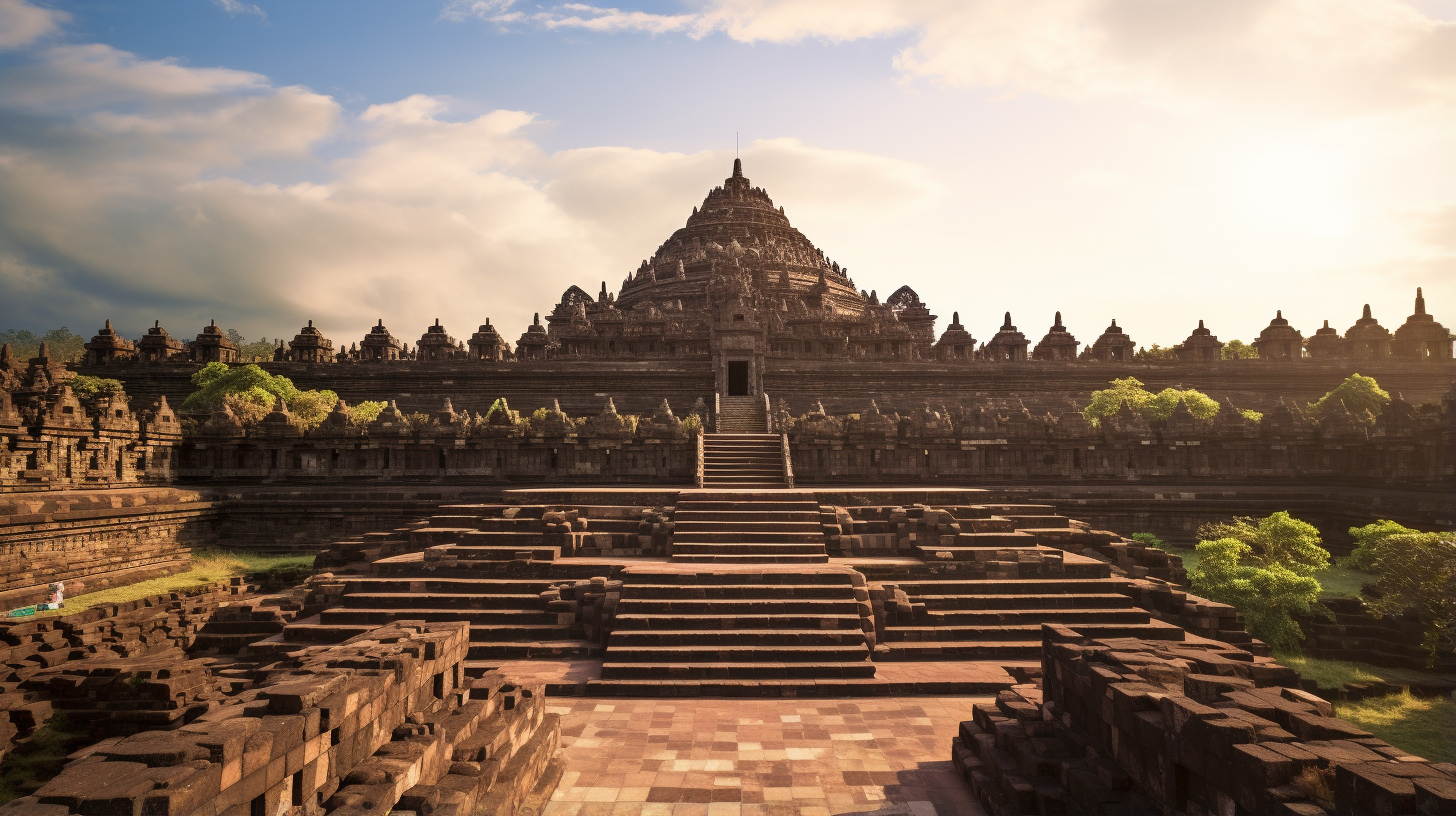Marvels of architecture spread across the globe have confounded historians, archaeologists, and scientists for centuries. These enduring constructions, attributed to the innovation of long-gone civilizations, continue to mesmerize us.
Let’s set forth on a journey to examine three remarkable pyramid sites that defy conventional explanations, igniting contemplation on their true intentions.
1. Gnung Penang’s Puzzling Mystery
In the heart of Western Java, Indonesia, lies Gnung Penang, dubbed the “Mountain of Illumination.” Initially mistaken for a mere mound of dirt and rubble, it revealed a grand secret.
Unveiling a 300-foot-tall step pyramid, speculated to be over 10,000 years old, this colossal structure built from millions of tons of Basalt raises inquiries about its creators.
As scholars connect the dots, they suggest that this pyramid emerged from an advanced society, possibly originating from the submerged land of Sunderland, existing around 20, 000 years ago.
Local legends murmur about star navigators, entities descended from outer space, as the architects of this perplexing pyramid. Were they extraterrestrial beings, or did ancient humans possess wisdom and abilities that still elude us?
2. Borobud’s Symbolic Journey
Perched on Java’s island, Indonesia, stands the Borobudur temple, the world’s largest Buddhist monument, constructed in the 8th and 9th centuries A.D. This pyramid-like wonder challenges typical pyramid norms, captivating with its intricate symbolism.

The Borobudur temple acts as a spiritual site where followers ascend from base to peak, symbolizing their journey towards Nirvana.
What intrigues academics are the 72 bell-shaped stupas adorning the pyramid. Each of these structures houses a seated Buddha, sparking discussions on ancient aerial crafts.
Did the Buddhists of that time envision Buddha as a cosmic explorer arriving in disk-shaped vessels from distant galaxies? The Borobudur temple invites us to probe the fusion of spirituality and ancient technologies.
3. The Enigmatic Great Pyramid of Giza
Dominating the landscape as one of Earth’s most recognized structures, the Great Pyramid of Giza baffles us with its complex engineering and architectural finesse.
Rising 480 feet tall, comprised of over 2 million limestone blocks, this pyramid stands as an unparalleled construction marvel. Its builders flawlessly leveled 13 acres to near-perfection, a feat that puzzles modern engineers.

While traditional archaeologists attribute its construction to Pharaoh Khufu around 2500 B.C., alternative theories propose a deeper, more enigmatic purpose.
Some speculate it functioned as a power plant, attuned to resonate with Earth’s energies, transforming them into electromagnetic power. Others ponder whether it served as a geomechanical device intricately linked to the Earth’s vibrations.
The Giza pyramids defy simplistic explanations, leaving us with more queries than resolutions. Were they merely burial sites, or do they cloak a profound mystery that has eluded us for ages?
Video:
Wrapping Up
To wrap up, these pyramid sites worldwide continue to pique our curiosity, challenging traditional narratives, prompting us to delve into ancient enigmas. While answers may slip through our fingers, the charm of these architectural wonders endures, driving our thirst to explore the unexplored and embrace the mysteries of our past.
